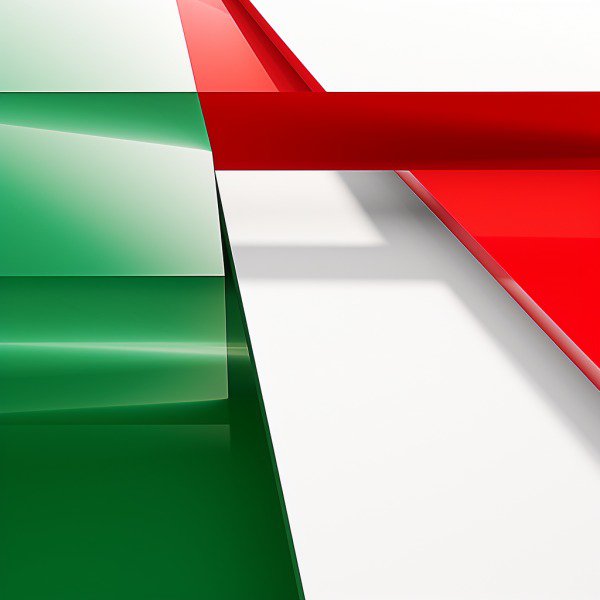Discover the secrets of successful Ecommerce Web Designing! Boost engagement, drive traffic, and skyrocket sales with expert strategies
An ecommerce website is like the foundation of an online business. It serves as an online store, helping you reach your customers and build relationships with them. Therefore, an effective website design is critical to drive traffic and encourage conversions on your ecommerce site.
A Guide to Successful Ecommerce Web Designing
A well-designed ecommerce website not only helps you create a great first impression but also provides customers with a pleasant user experience that encourages them to purchase from your online store.
Here is a comprehensive guide on the importance of e-commerce web designing and the strategies to help you enhance your website design and boost sales.

What is the importance of an ecommerce website?
E-commerce websites are essential for selling online. They allow customers to find and purchase products from ecommerce stores easily and offer an excellent way for businesses to reach out to their target audience. Investing in a good ecommerce website design ensures that your ecommerce site is appealing, engaging, and easy to use. A good ecommerce website design will help you drive more traffic to your ecommerce website, generate more leads, and assist in the sales process.
With the right website design strategy in place, you can ensure that your ecommerce store can provide customers with a seamless online shopping experience and keep them returning for more.

What are the different types of ecommerce website design?
There are several different types of ecommerce website design:
Business to Business (B2B) Design:
B2B ecommerce website design focuses on creating efficient and secure ecommerce solutions for sellers and buyers to transact. An example of a B2B ecommerce website design is Hubspot.
Hubspot is easy to navigate, not super content-heavy, and has enough icons, imagery, and multimedia to keep people engaged. HubSpot is an excellent B2B lead generation tool.
Business to Consumer (B2C) Design:
B2C ecommerce website design focuses on creating a user-friendly, visually appealing website that’s easy for customers to navigate. An example of a B2C ecommerce website design is Amazon.
Amazon has an intuitive navigation system, large-quality images and videos, and multiple payment options. It also offers personalized recommendations and comprehensive product descriptions.
Multi-Vendor Marketplace Design:
Multi-vendor marketplace website design helps organize products from multiple vendors in one central location for easy comparison shopping. An example of a multi-vendor marketplace ecommerce website design is Etsy.
Etsy is an online marketplace for handmade and vintage items. It offers various products from independent vendors organized into product category pages for easy navigation.

Features of great Ecommerce Websites
Responsive Design
Responsive web design will ensure that your ecommerce website’s design looks great and works well across all devices. In addition, it allows mobile users to easily view, navigate and purchase products from your ecommerce store without any issues or errors.
User Experience Website Design
A good user experience website design will make customers comfortable browsing and shopping online on your ecommerce site. Make sure to organize your web designs with easy navigation and features with a clear call to action.
Optimized Website Speed
The slow loading speed can be very frustrating for customers and likely lead them to abandon your ecommerce site. Instead, ensure your essential pages load quickly by optimizing product images, compressing code, and caching techniques.
Visuals
Visual elements such as product images, videos, and infographics can go a long way in helping you drive more engagement on your E-commerce website. Customers prefer to interact with a visually attractive ecommerce site.
However, when it comes to homepage design, less is more. It can be tempting to fill up your website design with many product photos but arrange the images elegantly with white space for balance and breathing room.
The use of bright colors creates fun energy. It will help customers feel cheerful and energized when visiting the site, prompting them to stay and shop at your online store.
Lifestyle photos representing your services can also help engage and connect with the target market.
Social Media
Social media can be a powerful tool for driving new customers to your ecommerce store. Make sure you create social media accounts and use them to promote your products and services. For example, you can use high-quality photos of your customers who purchased from your ecommerce store as social proof. It will make potential customers trust your brand and buy products from your online store.

Chatbots
Chatbots are an effective way to engage with customers in real-time. You can use them to provide instant customer service, answer inquiries, and guide customers through the buying process. As a result, it helps build better customer relationships and improves the overall customer experience.
Optimized for Mobile Devices
Most online shoppers now access websites via their phones, so optimizing your website design for mobile sales is essential. Ensure that your key elements, such as images, buttons, and forms, are appropriately sized for mobile screens. Additionally, your e-commerce site should feature a responsive design that automatically adjusts to different device sizes and orientations for optimal viewing.

Enhanced Navigation
Make it easy for customers to find what they’re looking for in your ecommerce store by creating intuitive navigation menus with clear labels and high-quality product photos. Include a search bar, category filters, and other options that help narrow down products. Additionally, minimize the number of clicks it takes for customers to reach their desired page by implementing drop-down menus and breadcrumbs.
Make your product categories and product pages easy to navigate. Let shoppers sort search results based on various criteria and eliminate items that do not fit into the product categories.
Includes High-Quality Images
Customers want to see what they’re buying before making a purchase decision. So include high-quality photos of your products from multiple angles, and be sure to keep product pages updated. Additionally, you can add zoom features or video demonstrations that give customers a better understanding of the product.
Reviews and Testimonials
Customers rely on reviews and testimonials when making purchase decisions, so you must include them on your product pages. Encourage customers to leave reviews or have customer testimonials from around the web. It helps build trust and credibility with potential customers.
Search Engine Optimization
Optimizing your E-commerce website for search engines is essential to drive organic traffic and increase visibility. Utilize SEO techniques such as keyword research, meta descriptions, and alt tags to ensure that search engine bots properly index your pages. Additionally, regularly update the content on your website to make it more attractive to search engines.

Simple Design
When it comes to designing an ecommerce website, simple is always better. The more design element you have on the page, like banner ads and pop-ups, the more it takes away from the entire point of the website, which is closing a sale.
Use just the right amount of text, visuals, and white space to enhance the experience for visitors.
Branding
Branding is an essential aspect of E-commerce. It includes everything from the logo, colors, and fonts to the page layout and product descriptions. Make sure your branding is consistent across all platforms. It will help you create brand recognition that customers can trust and recognize.

Secure Payment Processing
The last thing you want to do when running an E-commerce business is to have customers give up on their purchase due to a lack of payment security. Ensure your store uses secure payment processing with proper encryption and other safety measures. It will help assure customers that their data is safe and that they can make purchases without worries.
What is the best ecommerce website builder?
The best ecommerce website builder depends on your specific needs and preferences. Some popular options include:
Shopify
Shopify is a good example of an ecommerce platform that offers a way to quickly launch your dream online business and start selling to your customers, wherever they are. And if you want to customize your online retail store or build it from the ground up, the Shopify App Store and our APIs make that easy.

BigCommerce
BigCommerce is a powerful ecommerce store builder that offers an easy-to-use platform for creating and managing your online store, with features like automated product imports, inventory management, and real-time shipping capability. With BigCommerce, you can quickly launch your first online store and start selling in no time.
WooCommerce
WooCommerce is an open-source ecommerce platform that provides businesses of all sizes with a comprehensive solution for creating and managing their online stores. It offers many features, including WordPress integration, product and inventory management, automated sales tax calculation, multi-currency support, and more.
Magento
Magento is an advanced ecommerce platform that provides a comprehensive suite of tools to create and manage a successful online store. It offers flexible content management, powerful marketing tools, SEO optimization, and more. Plus, it’s available in both the cloud and on-premise versions so that you can choose the best option.
GoDaddy
GoDaddy is a famous ecommerce website builder that lets you quickly launch your store and start selling online with easy drag-and-drop tools. It offers unlimited storage, mobile-ready designs, customer reviews, built-in marketing tools, and more. Plus, it’s secure and reliable, so you can focus on growing your business without worrying about the technical side.

How to create a website for retail?
Creating a website for retail is simple:
- Decide on the type of website you want to create, such as an online store or blog.
- Determine which platform to build your site, such as WordPress or Shopify. After that, choose a domain name and register it with a hosting web service like GoDaddy or HostGator.
- Use a website builder or design tool to customize your site and make it look professional.
Ensure you include easy-to-use payment processing options to ensure customers can quickly complete transactions. Once your website is up and running, remember to create content that will help boost search engine rankings and draw in more customers. With the proper marketing and promotional efforts, your retail website can become a success in no time.
How much does it cost to design an E-commerce website?
The cost of designing an E-commerce website will depend on the complexity of the web design and any additional features you’re looking for. Generally, websites can range anywhere from $2,000 to $20,000, depending on the requirements. Additionally, there may be ongoing costs, such as hosting fees, software licenses, and maintenance, that you should take into consideration. It is essential to research and compare different ecommerce website design services before deciding. It will ensure that you receive the best value for your money.
What are the two essential factors in successful ecommerce design?
The two essential factors in successful ecommerce website design are usability and aesthetics. Usability refers to the ability of customers to find what they’re looking for quickly, with minimal effort. Aesthetics refers to how visually appealing the website design is, which can help capture customer attention and create a positive brand impression. Consider both factors for an ecommerce website design.
Good usability and aesthetics work together to ensure a positive experience for existing customers. Correctly optimized product pages, clear navigation, and visually engaging content can all help increase conversions and drive sales. Additionally, implementing features like customer reviews and video demonstrations can further enhance the user experience and create trust with potential customers. With careful planning and execution, a well-designed ecommerce website can be a powerful tool for a small business.

What are the best ecommerce design examples?
The best ecommerce design examples often incorporate modern aesthetics, intuitive navigation, and personalized features. Some top websites include Amazon, ASOS, Sephora, eBay, and Walmart. All these sites feature a modern web design optimized for usability and conversion. In addition, they provide helpful product descriptions and images to help customers make informed decisions about their purchases.
Another excellent example of a good website design is the website of established brands like Simply Chocolate. It is a company selling gluten-free chocolate bars. Its website’s background color changes each time a new chocolate bar is introduced. It is a great way to highlight individual products and keep the ecommerce stores interactive.
What are the advantages of an ecommerce site?
The advantages of an ecommerce website include the following:
Lower operating costs than traditional stores
A physical store has a higher operating cost than an online store. It is because you must pay for rent, electricity, employees, and other expenses. On the other hand, an ecommerce store has much lower operating costs since you don’t need to pay for a physical location, and you can handle most of the operations online.
Global Reach
An online store allows customers from all over the world to purchase your products. Therefore, it gives you access to a much larger potential customer base than a physical store.
Scalability and Automation
Ecommerce websites can be easily scaled to meet the demands of your business. You can also automate many processes, such as inventory management, shipping, and customer support. As a result, it helps you save time and money.
Convenience
Customers appreciate being able to shop from the comfort of their own homes. It means they can shop whenever and wherever they want without worrying about store opening hours or stock availability.
Improved Customer Experience
An ecommerce website allows you to provide customers with a more personalized experience by providing them with product recommendations and targeted advertising. It helps to encourage customer loyalty and increase sales.
Higher customer engagement
Ecommerce websites are filled with features that help customers interact with the brand, such as product ratings and reviews, video demonstrations, and live chat support. These features help create a positive impression of the brand and encourage customers to purchase.

What are the disadvantages of an ecommerce business?
The disadvantages of an ecommerce business include the following:
Security concerns
Ecommerce stores are vulnerable to security threats such as hacking and data theft. Therefore, protecting customer information and ensuring your website is secure is essential.
Competition
The online marketplace is becoming increasingly competitive due to the sheer number of businesses operating in this space. As a result, it can be difficult for small businesses to compete with more significant players with access to more resources and capital.
Increased complexity
Running an ecommerce business requires a higher level of technical knowledge than running a traditional store. To succeed, you need to be familiar with web technologies, software development, and marketing tools.
High customer expectations
Customers expect a high level of service when shopping online and are not afraid to compare products and prices. Unfortunately, it means you must constantly improve your website and customer service to stay ahead of the competition.
Customer Support
Providing customer support can be more complex for an ecommerce store since most interactions occur over the internet. Therefore, it is essential to have a reliable system for managing customer inquiries and resolving issues promptly.
High marketing costs
Marketing an ecommerce business requires significant investment in time and money, as you must have a strong presence on social media and other channels. Additionally, you need to develop effective SEO strategies to stand out from the competition.

What are the top ecommerce design tips to help create a great ecommerce website?
Make your website responsive
One of the most important design tips is making your professional website mobile-friendly. A mobile-friendly web design is essential for today’s online shoppers, who are more likely to visit websites from their phones and tablets.
Include product images and videos
Use high-quality images and videos of your products to give customers an accurate representation of what they are purchasing. It will help them make better buying decisions and increase their sales chances.
Offer various payment options
Providing customers with multiple payment options will make their shopping experience more convenient and secure. Popular methods include credit cards, PayPal, Apple Pay, and Google Pay.
Optimize the sales funnel
Design your pages and checkout process as intuitive as possible so customers can move quickly through the funnel and complete their purchases.
Optimize the checkout process
Ensure your checkout process is quick and straightforward to ensure customers can complete their purchases quickly.
It includes providing clear instructions on entering address and payment information and offering discounts and special offers.

Provide customer support
Customer satisfaction is essential for the success of any ecommerce business. Therefore, providing customers with various support options such as email, phone, and live chat is crucial. It will ensure their questions are answered quickly and help build trust in your brand.
Do I hire an ecommerce website designer?
Hiring an experienced ecommerce website designer is a great way to ensure that your website looks professional and functions appropriately. An experienced designer can create a unique design for your store, optimize it for SEO, and add features such as customer reviews and payment options. They can also help you manage the back end of your ecommerce store, such as inventory management and order fulfilment.
If you need more money to hire a professional designer, plenty of DIY options are available. You can use templates from popular ecommerce platforms like Shopify or WooCommerce to create your design, or you could even try coding your website from scratch. Finding a solution that works for you and your budget is essential.
No matter which route you choose, it’s essential to understand the basics of ecommerce website design to ensure your website looks great, functions correctly, and appeals to customers. With these tips and tricks, you can be well on your way to creating an excellent ecommerce website that will help you grow your business.

Where do I hire a great ecommerce designer?
There are a variety of places you can look for experienced ecommerce web designers, such as freelancing websites like Upwork or Fiverr. You can also search online for specialized design agencies specializing in ecommerce website design.
Design Match is an excellent resource for finding experienced ecommerce designers. They have a network of vetted, talented designers who can help bring your vision to life and create the perfect website for your business. They also offer custom design services, so you can get what you need without searching for the right freelancer.
Regardless of where you look for an ecommerce designer, make sure you take the time to research their portfolio and read reviews from past clients. It will help you find someone who is experienced and has a proven track record of success.
What qualities of an ecommerce designer do I look for?
When looking for an ecommerce web designer, you should look for someone who is experienced in the field and has a good understanding of your business. They should be able to create a website that is visually appealing and easy to navigate and optimize it for SEO and other search engine algorithms. You should also make sure they have experience with ecommerce platforms like Shopify and WooCommerce, as well as payment integrations. Finally, make sure they offer ongoing support to address any issues quickly.
Once you find a designer that meets these criteria, you’ll be on your way to creating an excellent ecommerce website that drives customers to your store and helps you grow your business.

Conclusion
Creating an ecommerce website is a great way to reach new customers and increase sales, but it’s essential to understand the basics of web design first. Follow these tips, and you’ll be well on your way to creating an excellent website that appeals to customers and helps you grow your business. Be sure to hire an experienced designer with expertise in ecommerce website design, and do your research to ensure they are reliable and have a proven track record of success. With the right ecommerce designer, you can create a beautiful and functional website that will attract the target audience and help you reach your business goals.




